10 Foods You Should Eat Every Day For Your Best Body

As a dietitian who has worked in the fitness industry for over a decade, there are a few things that I have found to be essential when trying to help individuals improve their diet and remain consistent with a healthy nutrition plan over weeks, months, and years. One of the nutrition pillars that I work on with clients, including through my work at Top Nutrition Coaching, includes having a base of staple foods on hand. These are foods that are simple to prepare, you could eat everyday, are enjoyable, and easy to grab even on the worst of days.
When thinking about everyday foods, there are a couple of specific nutritional characteristics to look for. Healthy food choices include a high fiber content, a rich source of vitamins and minerals, food with a healthy fat content, and foods that provide a good source of protein.
Dietary fiber is a non-digestible carbohydrate that is found in the cell walls of plants. When dietary fibers are eaten, they provide prebiotics for the gut microflora, thus improving the overall gut microbiome. Extensive research has been done on fiber improving cardiovascular disease through its role in the reduction of LDL (low density lipoproteins), a type of cholesterol. We also know that fiber helps with blood glucose management, appetite control, and regularity with bowel movements.
Good sources of protein are very important in helping to reduce the rate of muscle loss, particularly as we age. Studies have shown that the rate of muscle loss is about 1% per year for older adults. Muscle mass helps to maintain a healthy metabolism and is associated with a reduction in injury. Protein also helps to improve satiety, making meals more filling and satisfying.
Consuming foods with polyunsaturated fatty acids (PUFAs), monounsaturated fatty acids (MUFAs), omega-6, and omega-3 fatty acids have all been linked to improvements in cardiovascular disease and diabetes. These healthy fats are another food that will help to keep you full for a longer period of time after meals and make foods more enjoyable due to their high palatability.
Our goal is to combine foods with these nutrition attributes on a daily basis to provide nutrition that is filling, food you actually want to eat, and gives you energy for the whole day.
Oatmeal
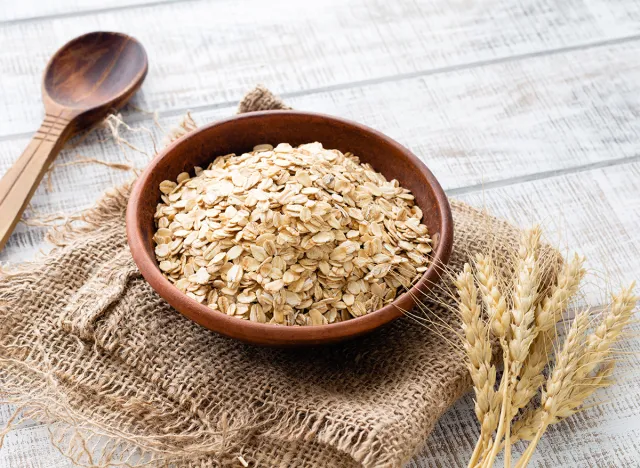
Oatmeal is a great option to add fiber and whole grains into your daily diet. And it keeps you full and energetic for hours after eating! Oatmeal works well for many people because it can be flavored any way that you like. Have a sweet tooth? Great, let's add peanut butter and a few chocolate chips. Savory? Let's saute some apples with butternut squash and add on top! I like to use oatmeal as a way to incorporate many of the other foods on this list as well. For example I will add flaxseed and top with berries and walnuts. Really pack in that nutritious punch!
Related: I Lost 20 Pounds in 4 Months With These 4 Effortless Changes
Almond or Walnuts
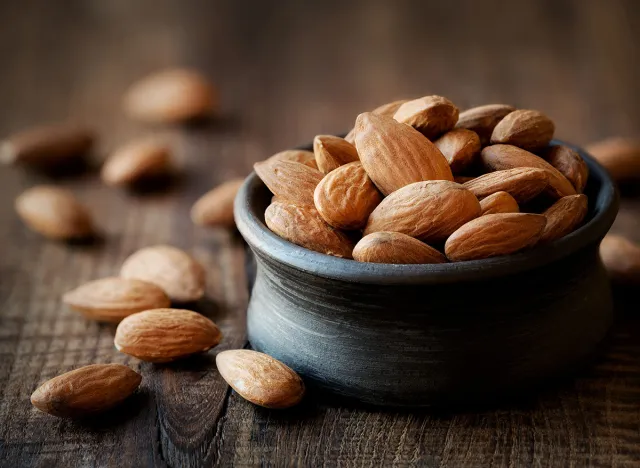
These nuts provide a really great snack option. They are easy to take on the go, or store in the car and they are minimally effected by temperature changes. Both options provide those healthy MUFAs and PUFAs I mentioned. You could eat whichever variety you prefer or you could combine them and eat both. There are also some really great flavored options such as smoky, BBQ, and cinnamon dipped to make eating these snacks more enjoyable.
Greens of Your Choice (spinach, kale, collards)
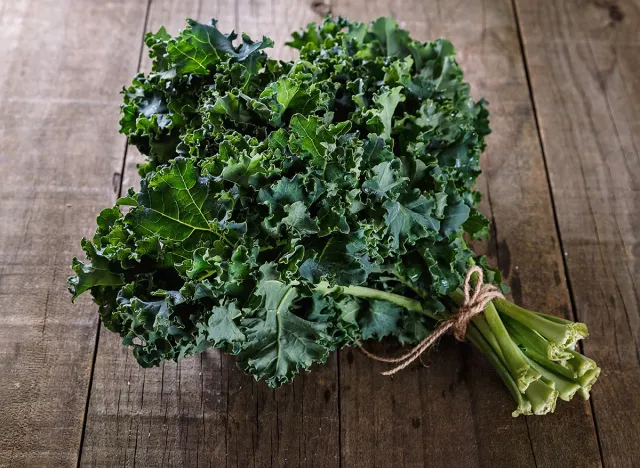
Greens are packed with nutrients such as iron, Vitamin K, calcium, Vitamin A, and Vitamin C. Additionally, they provide a good amount of fiber. They truly are a superfood. My best suggestion to getting more of these in your everyday life is to add to dishes such as casseroles, stir frys, soups, even scrambled eggs! The greens will not change the taste of these meals much and the benefits added are worth the extra effort.
Berries
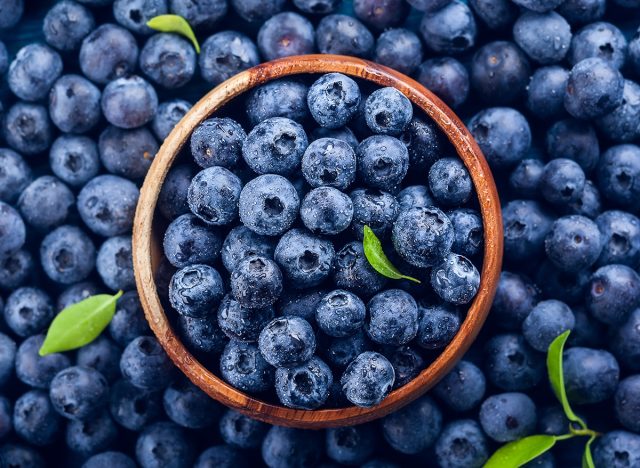
Blackberries, raspberries, blueberries, strawberries all provide great sources of fiber and tons of vitamins and minerals. These can easily be used as a topping for cereals or yogurts or blended into smoothies. I even have clients that love to eat frozen berries as a refreshing snack.
Related: 6 Body Changes Caused by Drinking Soda, According to a Diet Expert
Eggs
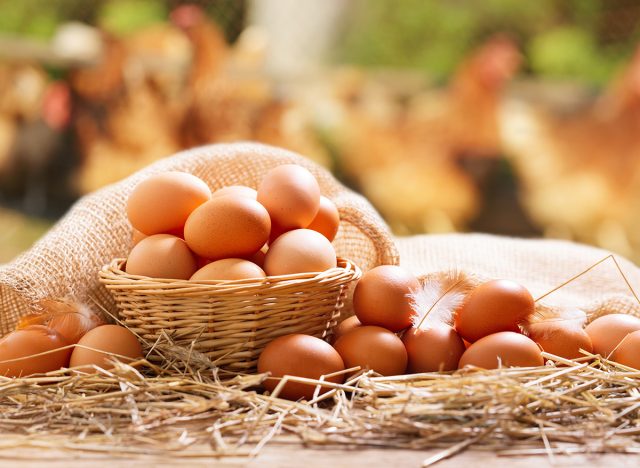
Eggs really are a powerhouse for nutrition. The egg whites contain a good source of protein, but the yolks are a great source of phosphorus, potassium, Zinc, Folate, Choline, Vitamin A, and Vitamin D. For most healthy adults, eating 1-2 eggs per day is safe and a great way to get some delicious nutrition.
Flaxseeds
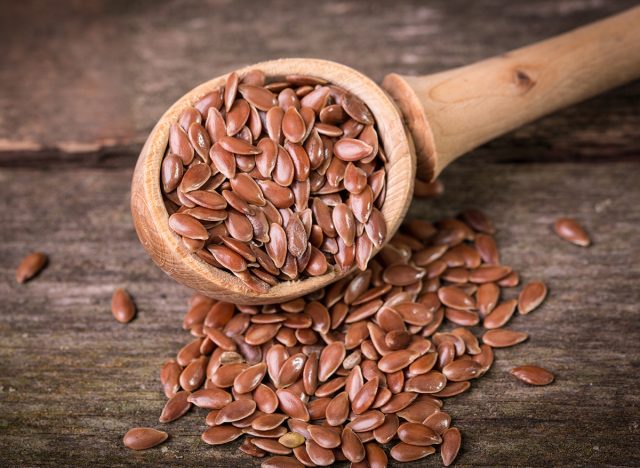
Flaxseed provides a good source of Omega-3 Fatty acids and a good source of fiber. Ground flaxseeds are best, as the seed shell prevents us from getting the full benefits of the Omega-3s. I include this on the list because it is a great nutrition booster to any oatmeal, yogurt, smoothie, sprinkled on salad, or used in baked goods.
Greek Yogurt

Greek yogurt is an option that I find people enjoy as breakfast, lunch, or even a snack. Again this is a very versatile food that provides a good source of protein and calcium. Greek yogurt can be used to make dips for fruits or veggies, topped with fruit, used to top waffles or toast, or even eaten on its own. There are even drinkable versions of greek yogurt which are great on the go options.
Beans

Beans are a great source of fiber in the diet. They are often used as a meat substitute in many vegetarian dishes for their protein content and versatility in taking on many different flavors. Fresh beans and canned beans can both be used in dishes like soups, casseroles, tacos, burritos, or topping for a salad.
Related: I'm a Personal Trainer With a Flat Belly and Here's How to Get Yours
Olive Oil
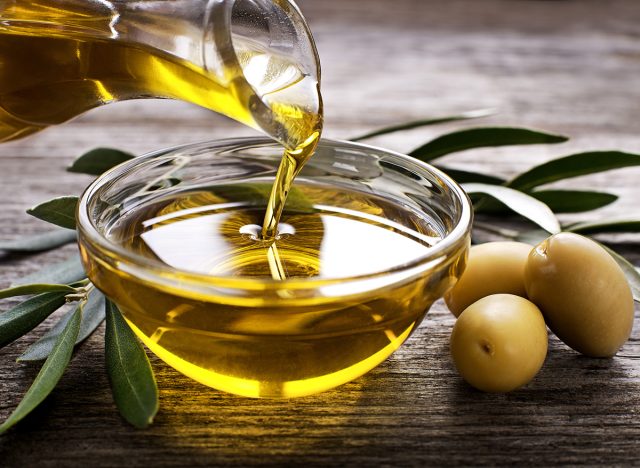
Extra virgin olive oil (EVOO as you will see in many recipes) is a wonderful source of monounsaturated fats. It is a staple in diets such as the Mediterranean diet, and for good reason! The flavor of olive oil is not going to overpower a dish and is great to use in dressings and when cooking with lower heat.
Broccoli or Other Cruciferous Veggies
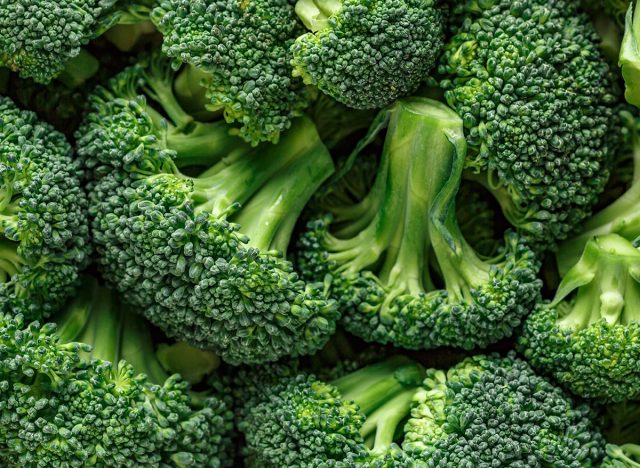
We could not have this list without some cruciferous veggies! This includes the family of broccoli, cauliflower, bok choy, cabbage, brussel sprouts, and turnips. These vegetables are high in fiber and micronutrients. My favorite way to eat these types of vegetables is in a quick stir fry for the best taste!
💪🔥Body Booster: Greek yogurt is a very versatile food that provides a good source of protein and calcium. You can enjoy as breakfast, lunch, or even a snack.
Courtney Pelitera MS, RD, CNSC, is a Certified Registered Dietitian at Top Nutrition Coaching, working with athletes of all ages to fuel their activity, prevent injury, and achieve desired body composition.




